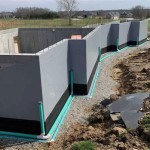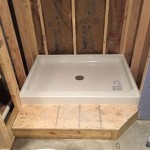Finishing a Basement Ceiling: A Comprehensive Guide
Transforming an unfinished basement into a livable and comfortable space often involves finishing the ceiling. This task, while challenging, can significantly enhance the aesthetic appeal and functionality of the basement. Whether you're a seasoned DIY enthusiast or entrusting this project to professionals, understanding the essential aspects of basement ceiling finishing is crucial.
1. Framing the Ceiling
The first step involves framing the ceiling. This framework provides support for the ceiling panels and other components. Typically, 2x4 or 2x6 lumber is used to create a grid of joists, spaced 16 or 24 inches apart, depending on the weight of the materials being used.
2. Insulating the Ceiling
Insulation is essential for regulating temperature and preventing heat loss or gain. Commonly used insulation materials include fiberglass batts, cellulose, or spray foam. Batts are fitted between the joists, while spray foam is applied to fill gaps and provide a continuous layer of insulation.
3. Installing Vapor Barrier
A vapor barrier prevents moisture from entering the ceiling from below. This is crucial because moisture can damage insulation and promote mold growth. The vapor barrier, typically a plastic sheeting, is stapled to the bottom of the joists.
4. Choosing Ceiling Panels
Ceiling panels come in various materials, including drywall, acoustical tiles, and wood planks. Drywall is a common choice for basement ceilings due to its affordability and ease of installation. Acoustical tiles, on the other hand, absorb sound, making them suitable for basements used as entertainment or recreation areas. Wood planks add a touch of warmth and rustic charm to the ceiling.
5. Installing Ceiling Panels
Installing ceiling panels requires meticulous attention to detail and proper tools. Drywall panels are attached to the ceiling joists using screws or nails. Acoustical tiles are fastened using a grid system suspended from the joists. Wood planks are nailed or screwed directly to the joists.
6. Finishing the Ceiling
Once the ceiling panels are installed, the ceiling needs to be finished. Drywall panels are typically primed and painted. Acoustical tiles may have a textured or painted surface. Wood planks can be stained or painted to match the overall basement decor.
7. Adding Lighting
Adequate lighting is essential for a well-lit and inviting basement. Recessed lighting, track lighting, or pendant lights can be installed in the ceiling to provide illumination. Consider the purpose of the basement and the activities that will take place when selecting lighting fixtures.
8. Safety Considerations
Safety should be a top priority throughout the ceiling finishing process. Wear appropriate safety gear, including eye protection, gloves, and a dust mask. Ensure the electrical wiring is properly installed and inspected by a qualified electrician.
Finishing a basement ceiling can be a rewarding project that transforms an unfinished space into a comfortable and functional living area. By following these essential aspects and adhering to safety guidelines, homeowners can create a beautiful and inviting basement ceiling that will enhance the overall enjoyment of their home.

How To Finish Basement Walls And Ceilings Ron Hazelton

15 Basement Ceiling Ideas To Inspire Your Space Bob Vila

Basement Ceiling Ideas Installation

Diy Basement Ceiling Ideas 6 Best Beautiful Budget Options This Life

Tales Of Painted Basement Ceilings And Pole Dancing Woes Beth Bryan

8 Basement Ceiling Ideas

Basement Ceiling Tiles Drop Ceilings

Diy Basement Ceiling Ideas 6 Best Beautiful Budget Options This Life

5 Faqs On Finishing A Basement Ceiling Sheffield Homes Finished Basements And More

Keep An Open Mind About Basement Ceiling
See Also








